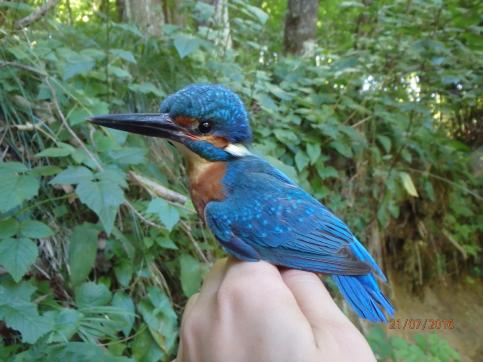Drivers of breeding success of the Common Kingfisher (Alcedo atthis) in southern Sweden

Natural rivers have become rare in Europe and species depending on undisturbed conditions face more and more survival pressure. The Common Kingfisher (Alcedo atthis) is the only species of 86 kingfishers inhabiting European grounds, and it is classified as Vulnerable. In Sweden, the population is relatively small and mainly restricted to the south. It is not well investigated and studies on ecology and breeding success in Sweden are rare. Moreover, breeding possibilities are declining, as the kingfisher needs mainly undisturbed rivers with washed out slopes for successful nesting. In order to figure out which parameters are driving the breeding success and population size in Sweden, the effects of winter severity, habitat quality, parents condition and the amount of simultaneous breedings were investigated. Therefore, a data set from 1999 to 2016 was used. Winter severity had a negative impact on the number of breeding pairs, but it did not affect the number of offspring. Higher frequented nesting sites showed higher success rates, whereas the number of birds breeding simultaneously seemed to negatively influence the number of offspring. The strength of the winter, habitat quality and occupation of an area therefore seemed to be of high importance, while individual nesting site quality played a minor role. The availability of high quality breeding areas might be a possible limiting factor for the kingfisher population in this region.
Responsible for this page:
Director of undergraduate studies Biology
Last updated:
05/09/17
